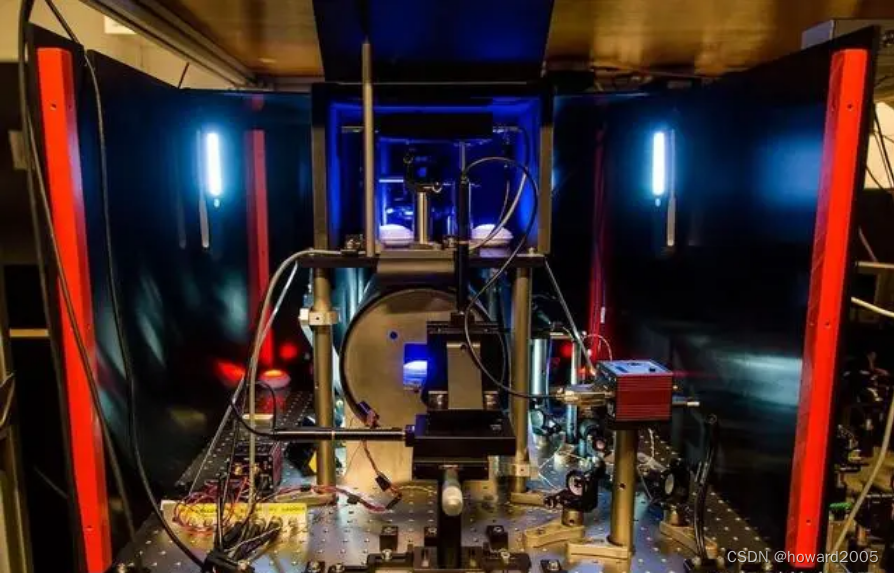
探索未知:量子计算机的崛起
Exploring the Unknown: The Rise of Quantum Computing
在2024年1月6日,中国安徽省量子计算工程研究中心和量子计算芯片安徽省重点实验室宣布,中国第三代自主超导量子计算机“本源悟空”正式上线运行。搭载72位自主超导量子芯片“悟空芯”的这一创新性成果,标志着中国在量子计算领域的领先地位。让我们回顾一下量子计算机的发展历史,见证这一科技的崭新篇章。
On January 6, 2024, the Anhui Quantum Computing Engineering Research Center and the Quantum Computing Chip Anhui Key Laboratory in China announced the official launch of the third-generation indigenous superconducting quantum computer named “Origin Wukong.” Equipped with a groundbreaking 72-qubit self-owned superconducting quantum chip, known as the “Wukong Core,” this innovative achievement signifies China’s leading position in the field of quantum computing. Let’s take a look back at the development history of quantum computers and witness this new chapter in technology.
量子计算机的雏形
The Genesis of Quantum Computing
量子计算的思想起源于20世纪80年代,当时物理学家理查德·费曼提出了“模拟自然”需要超越经典计算机的理论。然而,直到20世纪末,科学家们才开始在实验室中尝试建造量子比特,量子计算机的基本单元。
The concept of quantum computing originated in the 1980s when physicist Richard Feynman proposed the theory of “simulating nature” that required a computational approach beyond classical computers. However, it wasn’t until the end of the 20th century that scientists began experimenting in laboratories to construct quantum bits (qubits), the fundamental units of quantum computers.
超越界限的里程碑
Milestones Beyond Boundaries
2019年,谷歌公司宣布推出“悬铃木”,这是一台72位超导量子计算机。其突破性在于,它能够在200秒内完成传统超级计算机需要1万年才能完成的计算任务,引起了全球的轰动。这一成就开启了全球范围内对量子计算技术的全新关注。
In 2019, Google announced the release of “Sycamore,” a 72-qubit superconducting quantum computer. Its breakthrough capability to perform calculations within 200 seconds, a task that would take a traditional supercomputer 10,000 years, caused a global sensation. This achievement initiated a fresh wave of global interest in quantum computing technology.
中国的量子之光
China’s Quantum Radiance
2020年,中国科技大学推出了“九章”,一台76位的光量子计算机。不久之后,2021年,IBM公司也加入了这场技术的竞赛,推出了“鹰”,这是一台拥有127位超导量子比特的计算机。中国的量子计算机技术在短时间内取得的领先地位表明其在全球范围内的强大竞争力。
In 2020, the University of Science and Technology of China introduced “Jiuzhang,” a 76-qubit photonic quantum computer. Shortly after, in 2021, IBM joined the technological race, unveiling “Eagle,” a computer with 127 superconducting qubits. China’s rapid advancements in quantum computing technology demonstrated its formidable competitiveness on a global scale.
“本源悟空”的登场
The Debut of “Origin Wukong”
回到2024年,中国的“本源悟空”以其72位自主超导量子芯片的独特之处引起广泛关注。这款量子计算机在中国首条量子芯片生产线上制造,共有198个量子比特,其中包含72个工作量子比特和126个耦合器量子比特,使其成为目前中国最先进的可编程、可交付超导量子计算机。
Fast forward to 2024, “Origin Wukong” from China has captivated attention with its unique 72-qubit self-owned superconducting quantum chip. Manufactured on China’s first quantum chip production line, it boasts a total of 198 qubits, including 72 operational qubits and 126 coupler qubits, making it the most advanced programmable and deliverable superconducting quantum computer in China.
未来的挑战和展望
Future Challenges and Prospects
尽管中国在量子计算技术上取得了显著的进展,但在量子计算机的应用和产业化方面仍需进一步加强。未来,量子计算机有望在加密学、材料科学、人工智能等领域展现其巨大潜力,为我们开启一扇通往未知领域的大门。
Despite significant progress in quantum computing technology, there is a need for further strengthening its applications and industrialization in China. In the future, quantum computers are expected to showcase immense potential in fields such as cryptography, materials science, artificial intelligence, unlocking a gateway to unknown realms.
量子计算机的发展历史是一段不断超越界限的旅程,科学家们的探索之路依然充满了未知,但正是这种探索精神,推动着我们迎接未来的挑战。
The developmental history of quantum computers is a journey of constant boundary-breaking, and the spirit of exploration among scientists remains filled with the unknown. Yet, it is this spirit that propels us to face future challenges with anticipation.








 中国安徽省量子计算中心发布了本源悟空,一款搭载72位自主超导量子芯片的计算机,标志着中国在量子计算领域的领先。文章回顾了量子计算的历史,展望了其在加密学等领域的潜在应用和未来挑战。
中国安徽省量子计算中心发布了本源悟空,一款搭载72位自主超导量子芯片的计算机,标志着中国在量子计算领域的领先。文章回顾了量子计算的历史,展望了其在加密学等领域的潜在应用和未来挑战。


















 被折叠的 条评论
为什么被折叠?
被折叠的 条评论
为什么被折叠?










